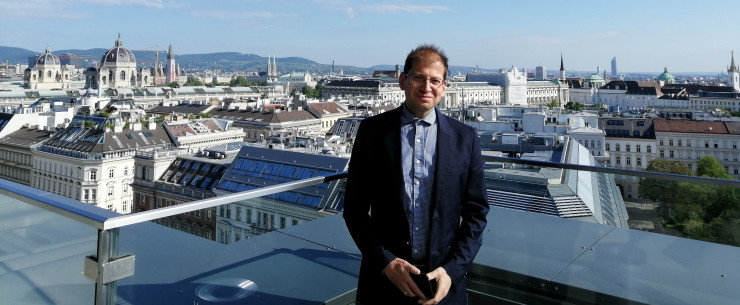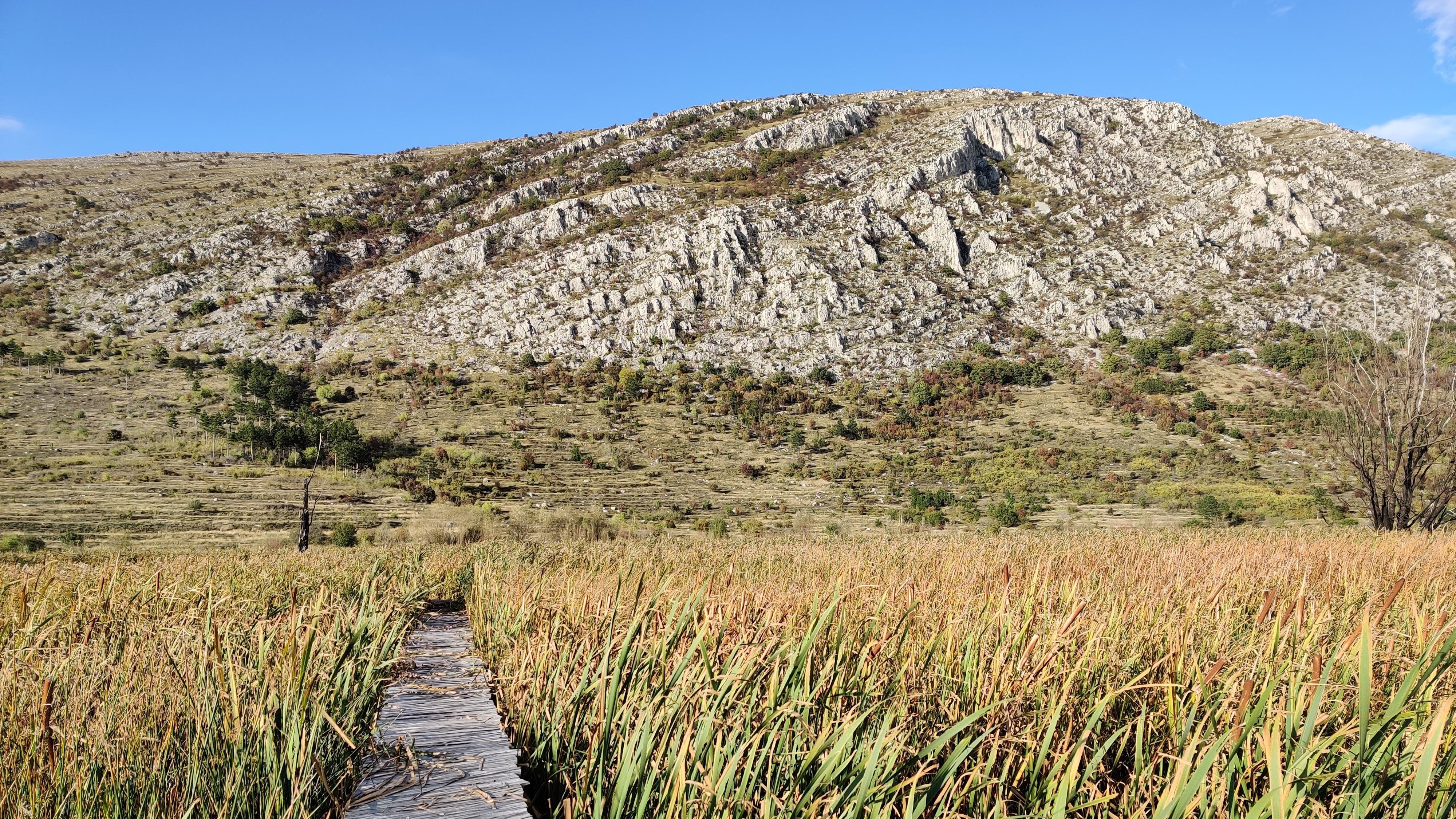
By Vanya Tsolova
Scientific achievements, economic boom, digitization – none of the successes of humanity would be a fact if there were no... wetlands.
Only 2,5% of world water is fresh it is mostly stored in glaciers, snow caps or underground aquifers. Less than 1% of the fresh water is usable, 0,3% is in the rivers and lakes. This is the whole fresh water we have and our wet zones ensure the bigger part of it.
Nearly 70 million people in the world feed themselves thanks to these natural territories. 40% from the flora and fauna of the Earth live and procreate exactly there. Hundreds of thousands species inhabit freshwater wetlands and the places with highest biological diversity are the coastal ones. 80% of the wastewater is discharged into nature without being previously treated, but the rich vegetation in the wetlands purify them.
Have you ever thought what will happen if the wet zones get contaminated or irretrievably lost? The answer is clear – there will be no life at all.
The national plan for preserving the most important wet zones in Bulgaria is a document with which the Bulgarian Biodiversity Foundation is proud of, because it is conducted with the joint efforts of various experts (ecologists, ichthyologists, ornithologists, managers, economists, etc.) after an extensive public discussion and partnership between NPO, institutions and scientists. “The plan is being implemented really well and is used in every wet zone, included in it. We managed to finance and prepare it within the framework of our joint project with the Bulgarian Society for Protection of Birds, Bulgarian Exchange Fund (BEF), Chernomorski solnitsi AD, Burgas Municipality and the Royal Society for Protection of Birds – Life for the Burgas lakes, financed by LIFE Program of the EC. This was a really good opportunity for the state to “check off” the commitment then, but today, 10 years later, the Plan needs to be updated, especially due to the fact that the climate changes the pictures changes way faster and unfortunately way more drastically”, commented the foundation and hope that the Ministry of Education and Culture will soon manage to find financing and to announce a competition for updating the document.
The Ramsar convention Key date for the wet zones around the world is February 2, 1971 when in the city of Ramsar, Iran, a convention is adopted – the first of the modern global international treaties for protection and sustainable usage of the natural resources and still remains to be the only treaty targeted towards specific ecosystems. Bulgaria is among the first countries to join the Ramsar convention. The territories in our country that fall into the list are 11 wetlands – Atanasovsko lake, Complex Belenski ostrovi, Durankulashko lake, Ropotamo Complex, Srebarna lake, Vaya lake and Karstov Complex Dragomansko swamp.
Tourism, sports, fishing, spa treatments, developing food sector, use of natural resources, cosmetics, even a destination for photo tourism – wetlands open endless possibilities. These specific territories are a complex network of ecosystems that maintain the balance between humanity and nature. They are also an economic force which, if properly exploited, can become a source of wealth and profit. They also support social and economic development through various services: store and purify water, feed, support the economy. And most importantly, they provide services worth $47 trillion.
More than 1 billion people rely on wetlands for income. Each hectare of wetland absorbs up to 6.8 million liters of water and thus protects us from floods and storms. They help regulate the climate: peatlands store twice as much carbon as forests, salt marshes, mangroves and sea grass beds are also huge stores of carbon.
Zones are fragile systems. Any unregulated activity can endanger them. And they are many – drying to free up areas for other human activities, violation of the water regime, unregulated hunting and fishing, even construction of wind generator and photovoltaic parks. Mistakes in the management of wetlands often have even fatal consequences, the BEF said categorically. Wetlands are a very important buffer, a sponge – they can store water, protect the surrounding territories, but they must be well managed.
An example of a serious case study with major environmental consequences is Pomorie lake and the construction of Road I-9 Sunny Beach – Burgas. Concerns are raised about the intended removal of atmospheric and surface waters that fall into the Pomorie lake catchment, not to the sea, but directly to the salt lake. The relevant institutions have been alerted, but the protection channel of Pomorie lake is impassable, has no drainage, and is filled up for the most part. The pumping station is not functioning, the pressure pipeline is destroyed and unable to perform its functions, and the Pazariolou River is dammed and diverted along a channel parallel to the road. Through a culvert, it passes under the road Varna – Burgas and enters Pomorie lake. All this has a detrimental effect on life in the protected area and Natura 2000 area and hinders the extraction of salt.
Salina Greens is a Portugese company that deals with the organic production and processing of salicornia – local plant species that grows in salt pans. The production system helps to preserve areas of great ecological importance, while supporting the local economy. In recent years, the consumption of salt shaker in Portugal is gaining popularity. So far, it is only grown in a few organic farms. The biologist Marcia Pinto, who has been working with salt shakers for more than 10 years, decided to fill this market niche and thus created Salina Greens. Marcia aims to stimulate the local economy and help preserve the fragile ecosystem of the salt flats. Cultivation of salicornia offers a sustainable solution to counteract the degradation of the salt flats. This plant has a strong resilience to climate change. The BEF also plans to use salicornia as a new potential resource from the salt lakes.
At the moment, the training on restoration and management of wetlands is not included in the academic programs of Bulgarian universities. There is a shortage of prepared, motivated and committed young specialists in this topic. Experiences and techniques for wetland restoration, management and monitoring are still not well presented with real-world examples to future ecologists. Although we already have a developed and integrated curriculum for wetland management in the Faculty of Natural Sciences at the University Prof. Dr. Asen Zlatarov – Burgas and Faculty of Biology – Paisiy Hilendarski University – Plovdiv. The main objective is to integrate the innovative wetland management program into the master's degree at these universities.
The potential and benefits of wetlands are the basis of the scientific development of Dr. Rosen Ivanov, chief assistant at the University of Mining and Geology St. Ivan Rilski. His work focuses on constructed wetlands for wastewater treatment with the possibility of co-generation of energy – a technology for optimizing the natural processes for self-purification of water.
The scientist began to look for opportunities to further develop his work into a real product and won a competition under the Entrepreneurs in Science program of the Carol Knowledge Foundation. Funding of BGN 30,000 helps him build a pilot plant of a constructed wetland for the treatment of domestic wastewater from a single-family house near Sofia. The pilot installation showed very good results and this motivated him to realize the idea in real conditions as well – by creating a startup.

These types of systems are significantly cheaper than conventional sewage treatment plants. After commissioning, they work autonomously, without human intervention and do not require additional operating and maintenance costs. This leads to a reduction in water treatment costs, electricity and fresh water consumption. There has been interest in the technology from some companies in the mining sector. This was also its main concept – purification of mining wastewater with parallel energy extraction, Ivanov explains.
In laboratory conditions, it has been found that the technology is also suitable for other types of wastewater. "In order for the product to become in demand and preferred, it is important to build a pilot plant for industrial wastewater to validate the technology in this sector as well," says the expert. "This requires a more serious investment and we are actively looking for ways to finance it from European programs and Bulgarian funds, we also have the support of the mining sector. For residential customers, without access to sewerage, the technology has already been proven to work, there is interest, and feasibility studies are underway for the construction of new constructed wetlands with parallel energy extraction. In this direction, the investment is significantly smaller, it brings greater added value to the client.
Investment interest in sync with nature – is it possible? Yes, it is possible, they are categorical from the BЕF. Such an example is Atanasovsko lake, where human activity and nature conservation go hand in hand. The northern part of the lake is a maintained reserve, and the southern part is a protected area, but despite this, salt mining takes place in the lake, part of the pools are used for medicinal purposes, and this not only does not harm the numerous inhabitants, but also creates more good conditions for them. For the needs of salt extraction, the lake is divided into 150 basins with different salinity, which, however, is the reason for a greater variety of species and, accordingly, more and richer food base. The pools are separated by dykes and ramparts, which serve as nesting sites for numerous species of birds (Lake Atanasovo is bird-richest place in Bulgaria with 334 species out of all 420 in the country).
Chernomorski solnitsi AD – factor for the local economy Chernomorski solnitsi AD is established in 1906 for the extraction of sea salt through solar evaporation of sea water and is located on the territory of the Atanasovsko lake protected reserve. In the process of sea salt production there are no harmful emission released into the environment. “Atanasovsko lake is an example of the human activity and the management the wet zones in symbiosis”, said categorically Deyan Tomov, chief technologist of Chernomorski solnitsi. The enterprise carries out restoration activities on the territory of the lake.
For the needs of salt extraction, the lake is divided into numerous basins with different salinity, which is the reason for a greater variety of different species of flora and fauna, respectively more and richer food base. The enterprise offers for visitors special lye and healing mud pools. They attract many visitors with curative and prophylactic purposes. Chernomorski solnitsi process the extracted raw material to make it accessible to as many spheres of activity as possible – they produce salt for food purposes and for the industry – for the leather, textile, cosmetics industry. Also, a big part of the extracted salt is used during the winter season for de-icing roads.
During the last few years there are two new products implemented – natural salt Flowers of Salt and bottled natural lye for home use. The company sells its products mainly on the local markets. In recent years, it has been exporting salt for an international cosmetics company, which uses it in its products.
THE BOTTOM LINE Are you already thinking what will happen if the wet zones are contaminated or get irretrievably lost? The answer is pretty clear – there will be no life anymore.



